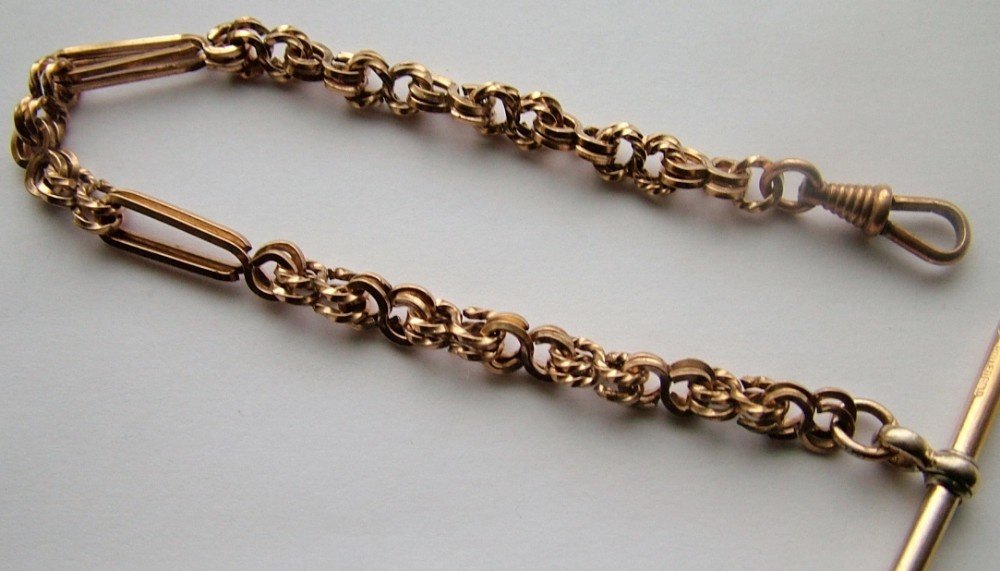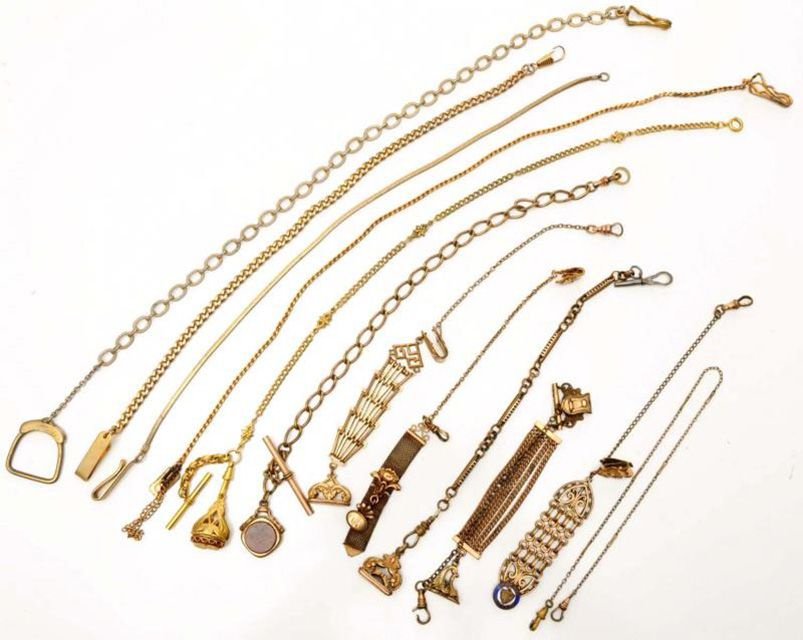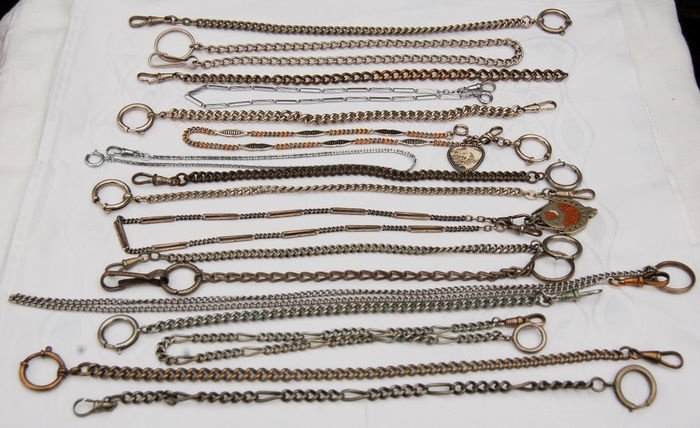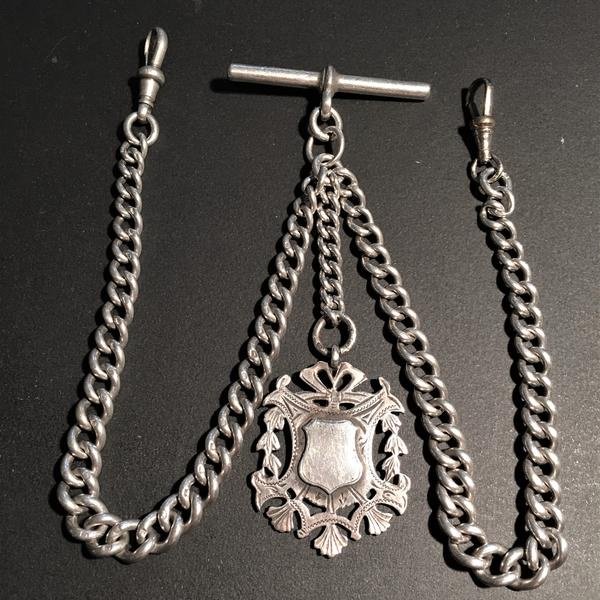Vintage Watch Chain Buying Guide

Published: Jun 05, 2021
Vintage Watch Chain Buying Guide
Watch chains were introduced about 100 years after pocket watches first appeared in the 16th century. Although pocket watches are no longer mainstream accessories, some manufacturers can still be found. However, it is the antique and vintage examples of the pocket watch that are sought after by collectors, valued for their provenance, workmanship, and often their fine, detailed decoration. Pocket watches were designed as portable clocks to be carried in a convenient pocket. The advent of watch chains solved the problem of how to handle the watch and keep it safe while carrying it around.

Chains were designed to secure watches to a waistcoat, lapel or belt loop while providing a means to pull the watch out of a pocket when required. They eliminated constant fumbling as an owner endeavoured to locate his watch – something he might do several times a day. One end of the chain usually had a T-bar for inserting into a buttonhole. Some had a loop for securing around a button. The other end had some form of swivel dog-clip for attaching to the watch. Vintage watch chains were usually sold as a separate accessory, and wealthy gentlemen often possessed several. Today vintage watch chains are valued for their own intricate designs. The chain was sometimes called a fob but nowadays a fob usually refers to the decorative ornament commonly attached to the end of the chain. It served no practical purpose except perhaps to balance the looped effect of the chain as it hung down below the pocket.
To make the best choice of which vintage watch chain to buy it is important to consider the origin, material and make of the chain. Advice on this, and also how to care for any watch chain purchased, can be found in this guide.

History of the Watch Chain
The earliest portable watches made in 16th century Europe were, really, just small clocks. They were quite large though and made of heavy brass. Often worn on a chain around the neck, they would have been quite uncomfortable. Eventually manufacturers were able to reduce the size so that men could carry watches in a pocket. It is probable that production coincided with the introduction of waistcoats by England’s King Charles II in 1675. In the late 1700s pocket watches became affordable for most people and many adopted the fashion of wearing one in each pocket, with the second watch usually being a fake. The fashion of watches on chains worn with a waistcoat – sometimes called a vest – peaked in popularity during the Victorian age and was attributed to Prince Albert, consort to Queen Victoria. There were two types of Albert watch chain – a single Albert and a double Albert. A gentleman fastened the single Albert chain to his vest’s middle buttonhole, allowing the chain’s end, perhaps with a fob attached, to drop down in front. He attached the other end of the chain to his watch, which was tucked into his left vest pocket. A double Albert chain was designed to attach in the middle of the chain, thus forming two front loops across the lower chest. The watch was attached to one end while another object could be attached to the other end – a watch winding key or a cigar cutter, for instance – and placed in the vest’s right pocket.
Discover Vintage Watch Chains
Watch chains were usually made of metal: manufactured in gold, silver, copper and brass, as well as in combinations of various other metals. Victorian England saw another fashionable material for these chains – human hair. To contemporary ears, this may seem bizarre, but nevertheless, ladies of the Victorian age often crafted jewellery from hair, sometimes as a memory piece honouring a loved one after they had passed on. Not all chains were mourning pieces. Some women used their own hair to craft watch chains for their spouses.
Ladies also prized portable watches, although they were more likely to wear them on a chain around the neck, just like a pendant. Vintage examples of these are, of course, interchangeable with any hanging ornament. Some ladies’ watch chains had a slide addition for adjusting the length of the chain.
Pocket watches were commonly worn until World War I, after which wristwatches became the norm. Wartime saw the introduction of a transitional design that became known as the trench watch. These resembled pocket watches attached to wrist straps or leather watch fobs.
Vintage watch chains are often found with decorative fobs. These were made in various designs. Some wearers had theirs fashioned as personal letter seals or as emblems of a gentlemen’s club. A variety of useful miniature tools were also added to watch chains, such as magnifying glasses, pen knives and cigar cutters. Fobs also were used as a form of advertising as company logo fobs were given away at trade shows and special exhibitions.

Makers of Vintage Watch Chains
When looking for vintage watch chains, it’s often not possible to identify the particular maker. Sterling silver chains should have a hallmark which will identify where it was registered and roughly how old it is. Such a piece will usually bear a maker’s initials, some of which are: E.W.&S. stamped on the T-bar, C.D.B. stamped on the fittings, H.A.&S., E.P., R.P., F&S, J.R., H.B.&S., W.J.H. Pocket watches and chains were also popular in the United States and some of those with fobs might bear American logos. Chains may have been manufactured by watchmakers and some by jewellers, and any stamps on the chain should be researched to try and understand its origin.

Conclusion
Shopping for a vintage watch chain should begin with learning about the different varieties that are available and understanding their history. Understanding the styles available should help a buyer make a more informed purchase. Once you have collected this information, you can buy a Vintage Watch Chain safely and securely on eBay.